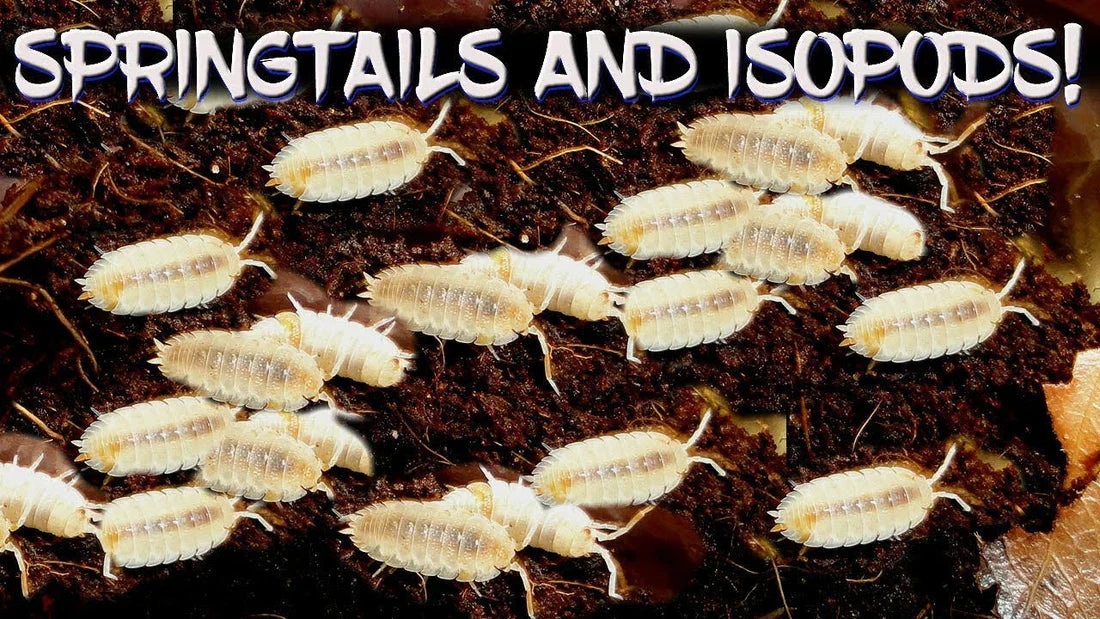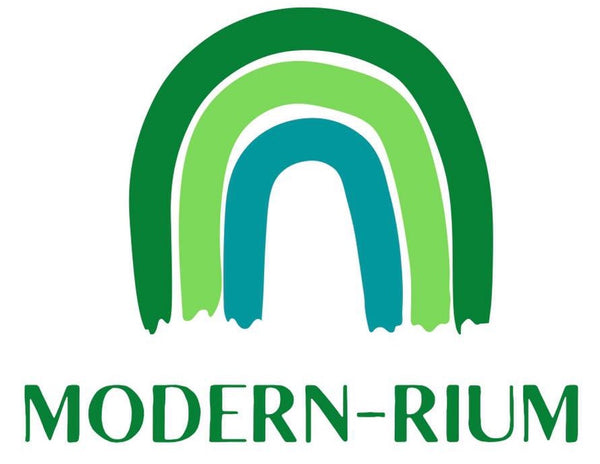
Caring for Isopods and Springtails: The Foundation of a Healthy Bioactive Ecosystem
Danny PhamShare
In modern bioactive vivarium and terrarium design, the most successful systems are those that operate as miniature, self-regulating ecosystems. While plants and animals often take center stage, the true stability of these enclosures depends on their smallest inhabitants — isopods and springtails. These invertebrates form the biological cleanup crew, quietly maintaining balance, recycling waste, and keeping micro-ecosystems alive and thriving.
Understanding the Microfauna
Isopods (Order: Isopoda)
Isopods are terrestrial crustaceans — relatives of shrimp and crabs — that have adapted to life on land. Species such as Armadillidium vulgare, Porcellio scaber, and Cubaris sp. are staples in the terrarium world.
Their role is critical:
- Decomposition: They break down leaf litter, decaying wood, and organic waste.
- Soil Aeration: Their burrowing improves substrate structure and prevents anaerobic zones.
- Nutrient Cycling: Waste from isopods becomes bioavailable for plants, closing the ecological loop.
Springtails (Order: Collembola)
Springtails are tiny hexapods that thrive in moist environments. Their unique furcula (tail-like appendage) lets them “spring” into the air when disturbed. Common species include Folsomia candida and Sinella curviseta.
Their primary functions are:
- Fungal and Mold Control: They consume fungal hyphae and decaying material, preventing mold blooms.
- Nutrient Conversion: They break down detritus into micro-nutrients that plants can use.
-
Ecosystem Indicators: A thriving springtail colony signals a well-balanced humidity and substrate system.
Together, isopods and springtails create a self-sustaining clean-up crew, essential for bioactive terrariums, dart frog vivariums, and paludarium ecosystems.
Habitat Setup and Environmental Conditions
1. Substrate Design
A proper substrate is the foundation for microfauna health:
- Base Layer: A mix of coco fiber, sphagnum moss, and organic compost.
- Drainage Layer: For high-humidity enclosures, use LECA or gravel to prevent waterlogging.
- Leaf Litter & Wood: Provide food sources and shelter — magnolia, oak, and beech leaves are ideal.
- Calcium Source: Crushed cuttlebone or eggshells support isopod exoskeleton development.
2. Humidity and Moisture Management
- Isopods: Most species prefer 70–90% relative humidity. Porcellio laevis and Cubaris species require particularly moist microhabitats.
- Springtails: Thrive in damp, but not waterlogged, conditions. A moist top layer of sphagnum moss or leaf litter helps maintain microclimate stability.
- Technique: Mist lightly and regularly. Use a hygrometer for professional consistency.
3. Temperature
- Optimal Range: 20–26°C (68–79°F).
- Avoid placing enclosures near direct sunlight or HVAC vents, as sudden fluctuations can cause colony die-offs.
4. Ventilation
- Ensure adequate airflow without sacrificing humidity.
- Use fine mesh ventilation or adjustable air slots to balance gas exchange and moisture retention.
Feeding and Nutrition
Isopods and springtails feed primarily on decaying organic matter, but professional keepers supplement to encourage strong, reproductive colonies.
- Staples: Leaf litter, rotting wood, and biofilm.
-
Supplements:
- Dried seaweed or fish flakes (for protein and minerals).
- Vegetable scraps (carrot, zucchini, sweet potato).
- Calcium carbonate sources (essential for molting).
Feeding frequency depends on colony size and environmental conditions — typically once a week for isopods, while springtails can be fed yeast powder or uncooked rice grains every few weeks.
Colony Health and Maintenance
- Population Monitoring: Overcrowding can lead to resource depletion. Introduce colonies proportionally to enclosure size.
- Mold Management: If mold appears, reduce moisture slightly — springtails will often consume minor outbreaks.
- Substrate Refresh: Every 6–12 months, replace portions of the substrate to maintain nutrient balance.
- Predator Prevention: Avoid introducing predatory mites or ants; they can collapse colonies quickly.
Breeding and Growth
Both species breed readily in stable, moist conditions.
- Isopods: Females carry eggs in a brood pouch (marsupium). Juveniles resemble miniature adults and mature in 3–6 months.
- Springtails: Lay eggs in substrate; populations can double within weeks under optimal conditions.
A thriving microfauna colony signifies a healthy, mature bioactive setup. Many professionals even maintain separate culture containers to sustain backup populations for future enclosures.
Integration into Bioactive Terrariums
When introducing isopods and springtails into vivariums:
- Prepare a mature, cycled substrate.
- Introduce springtails first to establish a mold-control base.
- Add isopods once humidity and leaf litter layers stabilize.
- Allow 2–4 weeks before adding reptiles, amphibians, or plants for full ecosystem balance.
This “bottom-up” ecological build ensures long-term stability, mimicking natural succession in forest floors or tropical microhabitats.
Professional Applications
- Zoological Exhibits: As part of sustainable vivarium systems for amphibians and reptiles.
- Research & Education: Used in soil biology studies and environmental modeling.
- Interior Biophilic Design: Support living wall systems and decorative terrariums by maintaining soil health invisibly but effectively.
Their simplicity hides their significance — isopods and springtails are the unsung engineers of living systems.
Conclusion
To the trained eye, a terrarium’s beauty lies not only in its lush canopy or colorful fauna but in the invisible work of its microfauna. Isopods and springtails are more than caretakers; they are indicators of environmental health, agents of regeneration, and silent partners in every successful bioactive design.
Mastering their care is not just good husbandry — it’s ecological artistry.
 is here! Shop now, pay later in 4 easy installments
is here! Shop now, pay later in 4 easy installments











